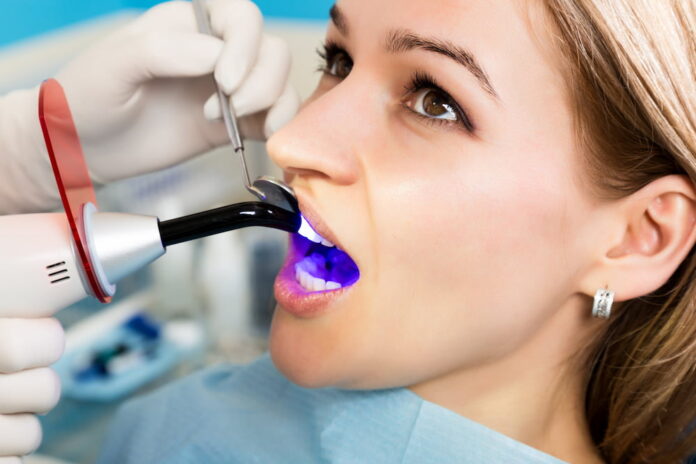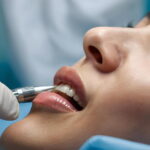Preparing for a comprehensive oral and dental examination may seem intimidating, but it doesn’t have to be. By following the right steps, you can ensure a smooth and stress-free visit to the dentist’s office. This article will discuss how to prepare for a comprehensive oral and dental exam so you can feel confident and ready.
Components Of The Examination
A comprehensive oral and dental examination consists of several components, including:
– An assessment of the patient’s medical history to determine any underlying health conditions that may affect treatment options.
– A visual inspection of the teeth, gums, mouth tissue, tongue, palate, throat, and neck for signs of decay or disease.
– X-rays to identify cavities and other issues not visible during a visual checkup.
– The use of an intraoral camera to magnify certain areas in the mouth for further evaluation.
– An assessment of tooth pain or discomfort and the ability to chew food and articulate words clearly.
– Additional tests like saliva swabbing or genetic testing to detect potential problems before they become severe.
After all data has been collected from these examinations and tests, the dentist will develop a personalized plan to meet the patient’s needs.
Setting Up An Appointment With The Dentist
Scheduling an appointment with the dentist is essential for ensuring a comprehensive oral and dental examination. When making an appointment at your local dental office, consider setting aside enough time to cover all possible topics during the visit. This includes any questions related to brushing techniques and flossing habits, as well as scheduling routine cleanings every six months.
Consulting a professional, such as those at Grove City Dental, can provide insight into preventive measures that could reduce future risks. Factors such as age, gender, medical history, and current health can help determine the type of checkup you need. For instance, if you’ve had previous issues with gum disease or cavities, more frequent visits may be necessary.
If you have any concerns about existing conditions or treatments needed for long-term care plans, make sure to discuss them ahead of time so appropriate steps can be taken immediately after the exam.
Preparing For The Examination Day
By taking the time to prepare for your comprehensive oral and dental examination, you can increase the likelihood of having a smooth and successful visit to the dentist’s office. Here are some practical tips to follow:
1- Observe A Good Oral Hygiene Routine
You can prepare for your comprehensive oral and dental examination by implementing a good oral hygiene routine before your visit.
Brush your teeth twice daily with fluoride toothpaste and floss at least once daily. Rinsing with an antimicrobial mouthwash can also help reduce plaque buildup between brushings and provide extra protection from cavities and gingivitis. Maintaining a consistent oral hygiene routine can significantly improve your oral health and contribute to a successful dental examination.
2- Avoid Certain Foods And Drinks
To ensure your mouth is in top shape for the exam, there are certain foods and beverages you should avoid:
– Sugary snacks such as candy or soda
– Acidic items like citrus fruits or juices
– Sticky foods like caramel or taffy
Avoiding these foods and drinks can help keep your mouth in optimal condition for the exam.
3- Provide Accurate Dental History
Providing accurate dental history is critical according to this dentist in Avon Lake OH. Your dentist needs to know about your past medical and dental treatments, as well as any current medications, to evaluate your overall health and make necessary changes for the best possible care.
Be honest about your dental hygiene practices, such as brushing, flossing, and using mouthwash or other products. This information will be considered when creating a treatment plan after your exam.
4- Understand The Visual Exam Process
During your comprehensive oral exam, your dentist will physically inspect your gums and teeth. They may check the depth of pockets between each tooth and its surrounding tissue by probing around the gum edges. They’ll look for signs of decay, infection, plaque buildup, missing teeth, misalignment, and cracked enamel.
In addition, an oral cancer screening will be conducted, and any problem areas will be noted to create an individualized plan for ongoing care.
5- Get Ready For Dental X-Rays
Preparing for a dental X-ray is simple and straightforward. The only thing you’ll need to do is brush your teeth before your appointment to ensure a clean and hygienic environment. You may also be asked to remove metal objects, such as jewelry and eyeglasses, that might interfere with the X-ray images.
To prepare for a dental X-ray, a technician will first cover your chest with a lead apron to shield you from any excess radiation. Next, you will be positioned either sitting or standing in front of the X-ray machine while the technician sets up the film or sensor. Once everything is ready, the technician will take the X-ray image by pressing a button. It is crucial to remain motionless during this process to ensure that the image is clear and accurate.
6- Understand The Significance Of Dental Charting
Dental charting is an essential part of a comprehensive oral and dental examination. It helps dentists identify areas of decay, wear, or other damage and document existing restorations such as fillings or crowns. This information is used to plan the best treatment options for patients.
During the exam, your dentist will record information about each tooth on a dental chart, including its shape, size, position concerning adjacent teeth, any cavities present, and previous treatments performed. This information is critical for creating personalized care plans. It also serves as a baseline for future examinations to track changes over time and determine if further action is necessary.
7- Get Ready For The Periodontal Examination
A periodontal examination is a specific type of oral examination that focuses on the health of the gums and supporting structures of the teeth. For a smooth and comfortable periodontal examination, here are some tips to follow:
– Brush and floss regularly beforehand to remove any plaque or food particles from between teeth.
– Consider scheduling a preliminary visit so they can check for any cavities or other issues that may cause pain or discomfort during the comprehensive oral and dental examination.
– Take steps to relax your body before the appointment, such as taking deep breaths and practicing mindfulness activities like meditation or visualization exercises.
– Inform your dentist about any bad experiences you have had and areas of concern before starting the examination.
By following these tips, you can help reduce discomfort and anxiety during your periodontal examination and ensure a better overall experience.
8- Understand The Importance Of Bite Analysis
Bite analysis is an important part of oral and dental examinations. It involves inspecting how the upper and lower jaws fit together when you close your mouth.
The goal is to identify any incorrect bites or misaligned teeth that could lead to problems such as pain, enamel damage, tooth decay, gum disease, headaches, neck/shoulder muscle tension, and difficulty chewing food properly.
Bite analysis can also help reveal jaw joint disorders such as temporomandibular joint (TMJ syndrome). If there are any issues with how the jaws meet, the dentist may then perform additional tests or refer you to a specialist for further evaluation and treatment.
9- Know What To Expect During An Oral Cancer Screening
During an oral cancer screening, the dentist or hygienist will examine your lips, cheeks, tongue, throat, and gums for any signs of abnormal growth or discolorations that could indicate early stages of mouth cancer. They may use a small mirror and light to aid in their examination and perform additional tests like a biopsy if suspicious areas are found.
The dental professional may also check for swollen lymph nodes in your neck and take X-rays to get a better view of the area behind your teeth and jawbone. It’s crucial to communicate any unusual symptoms you’re experiencing, such as persistent sores or lumps, so that further testing can be done if necessary.
Oral cancer screening is an important part of preventive care for maintaining good oral health and catching any medical issues early on.
Importance Of Follow-Up Appointments
Follow-up appointments after a comprehensive oral and dental examination are essential for maintaining optimal health. Here’s why:
– Regular checkups can identify any early signs of disease or decay before they worsen.
– Changes in your medical history or technological advancements may lead to new treatment options.
– Follow-up visits provide an opportunity to get comfortable with your dentist and ask questions about treatments.
– These appointments are an excellent platform for discussing lifestyle changes needed to improve overall health.
– Scheduling regular cleanings helps reduce plaque buildup and prevent gum disease.
Adhering to your dentist’s recommended schedule of checkups is crucial for maintaining good oral hygiene and overall wellness.
Final Thoughts
In summary, preparing for a comprehensive oral and dental examination is less complex when broken down into manageable steps. From observing a good oral hygiene routine to understanding what to expect from each component of the exam, these preparations can make the examination experience more comfortable and efficient.
A well-prepared patient is a partner in their dental care, actively contributing to the quality of their oral health. Beyond the examination itself, the importance of regular checkups and follow-ups cannot be overstated. These appointments serve to keep your dental health on track, allowing for early detection and treatment of any potential issues. Prioritizing these visits is an investment in your oral health, ensuring you maintain a beautiful and healthy smile for years to come.
Read Also
- The Future of Men’s Health: Why Telehealth Is Here to StayTelehealth isn’t just a pandemic trend that faded into the background. For Australian men, it has become one of the most practical, time-saving, and stress-free ways to manage everyday health — and it’s shaping the future of how we access care. Platforms like DOCTO, an Australian online doctor and specialist telehealth service, are leading the… Read more: The Future of Men’s Health: Why Telehealth Is Here to Stay
- How to Build a Simple, Clean Skincare Routine ?You don’t need a complicated skincare routine. It doesn’t have to be something that requires twenty different products and confusing steps. Your routine works well with just a few high-quality clean ingredients. The beauty industry keeps pushing more products, but your skin actually needs less. You only need a simple approach to get better results… Read more: How to Build a Simple, Clean Skincare Routine ?
- How Preventive Dental Care Supports Overall HealthHave you ever wondered how a simple dental checkup could impact your entire body? Oral health is more than just a bright smile. Studies show that poor dental habits can contribute to serious health problems. Gum disease and tooth decay are linked to heart disease, diabetes, and infections. Yet, many people overlook preventive dental care.… Read more: How Preventive Dental Care Supports Overall Health
- Seeing Clearly in a High-Tech World: A Deep Dive into Advanced Vision Care ServicesProtecting your eyesight isn’t optional—it’s essential. Modern eye care has evolved far beyond basic exams, offering advanced diagnostics, personalized treatments, and surgical innovations that keep vision sharp for life. A leading example is Intermountain Eye Center, home to specialists like Dr Fishburn Boise, where patients receive comprehensive, high-level vision care designed to preserve long-term eye… Read more: Seeing Clearly in a High-Tech World: A Deep Dive into Advanced Vision Care Services
- Why the Keto Diet Works for Some People—and Fails Dramatically for Others: An Ayurvedic Breakdown for Modern HealthcareThe keto diet has dominated weight-loss culture for years. For some people, it produces rapid fat loss, stable energy, and improved mental clarity. For others—especially those who gain weight easily—it leads to burnout, digestive distress, rebound weight gain, high cholesterol, and a metabolism that feels slower than before. Healthcare often frames this as a discipline… Read more: Why the Keto Diet Works for Some People—and Fails Dramatically for Others: An Ayurvedic Breakdown for Modern Healthcare
- How to Choose the Best Assisted Living Facility for SeniorsAre you looking for the right assisted living facility for a senior loved one? Choosing a place can feel overwhelming. There are many factors to consider, from care services to the environment. Safety, comfort, and social opportunities play important roles in daily life. Each senior has unique needs and preferences that must be met. Understanding… Read more: How to Choose the Best Assisted Living Facility for Seniors







